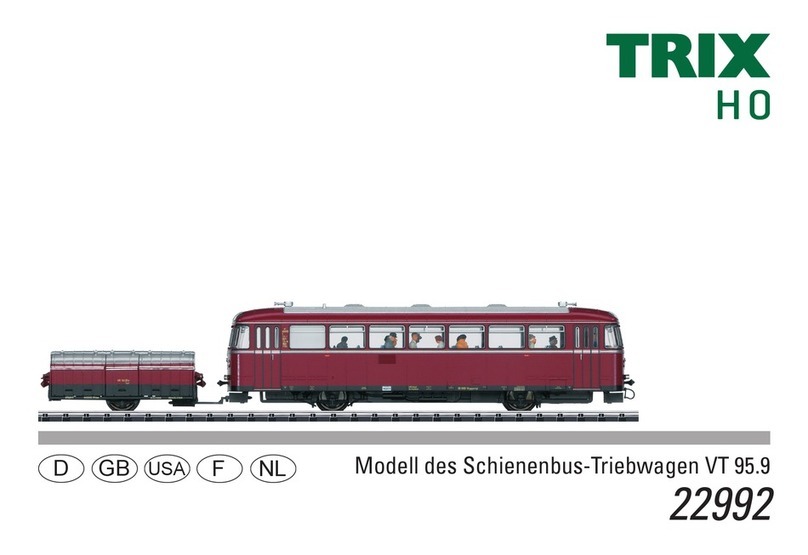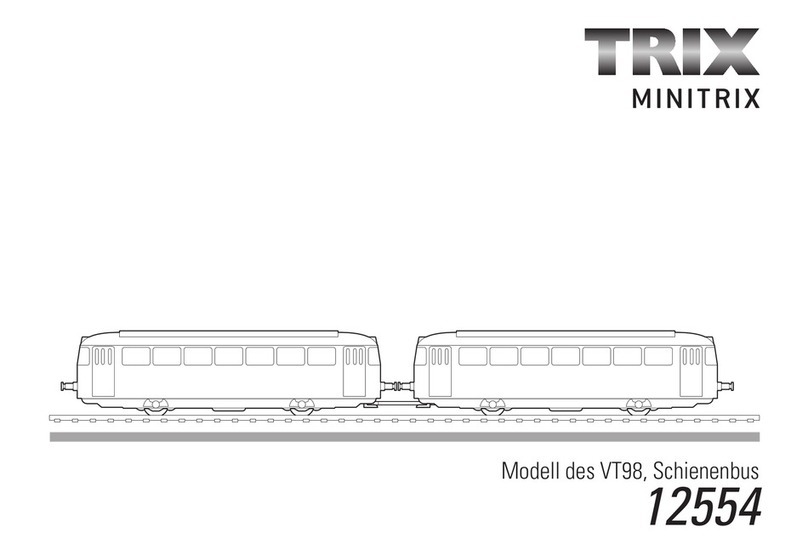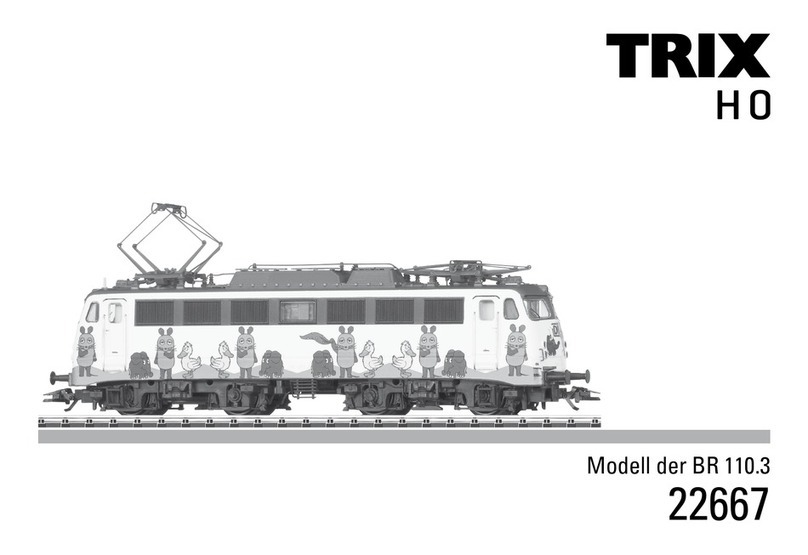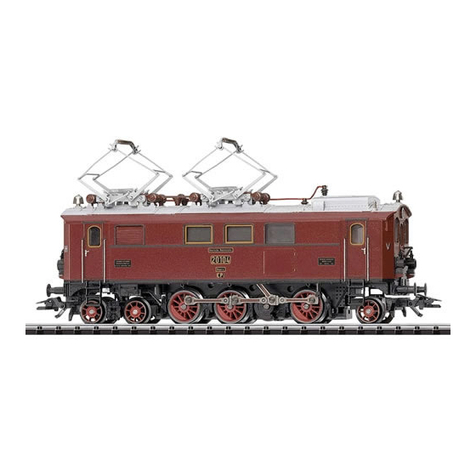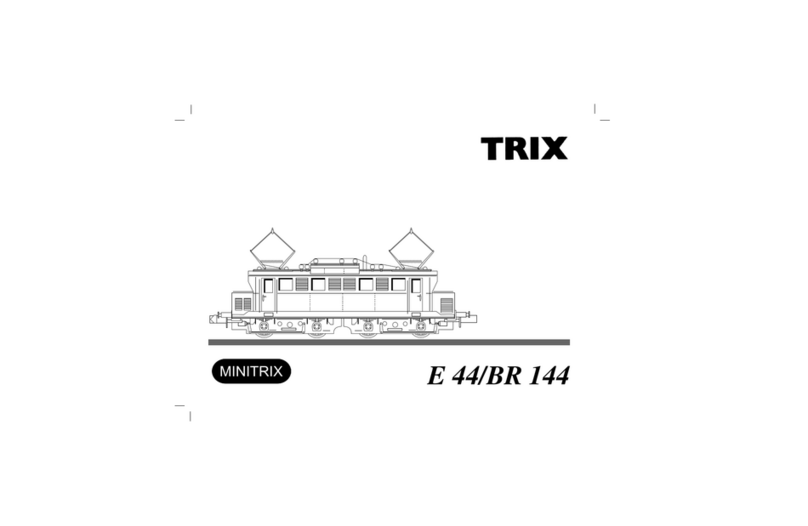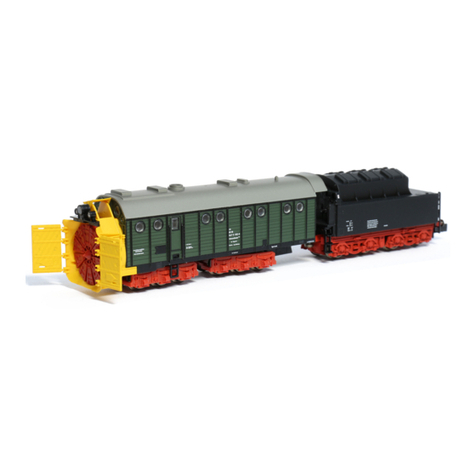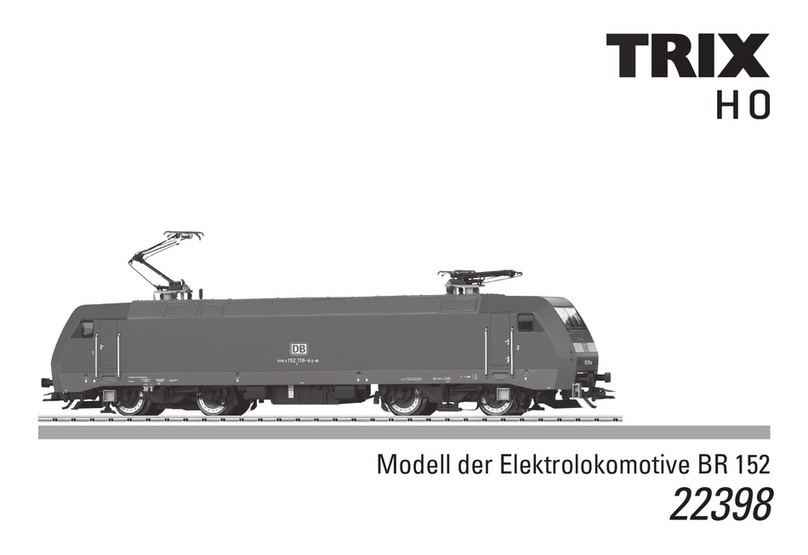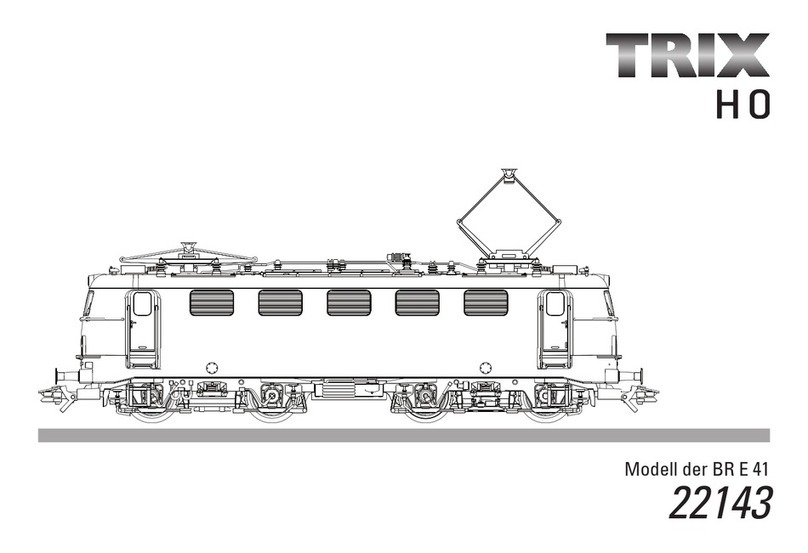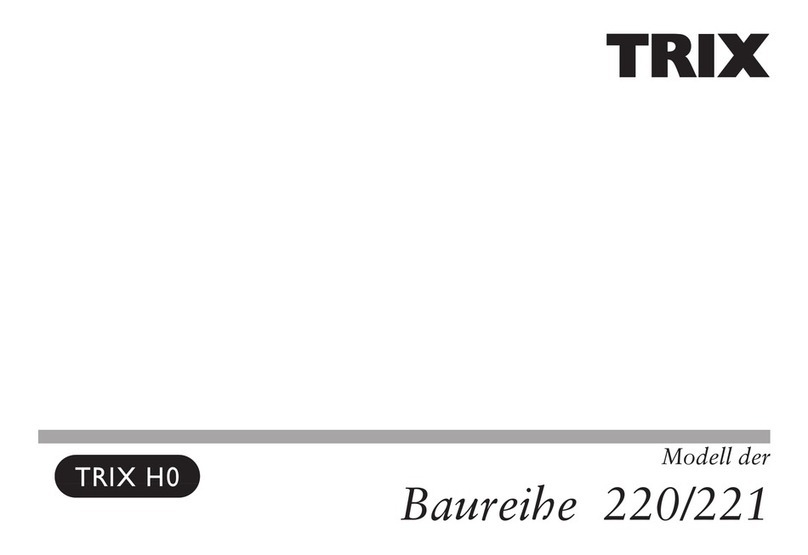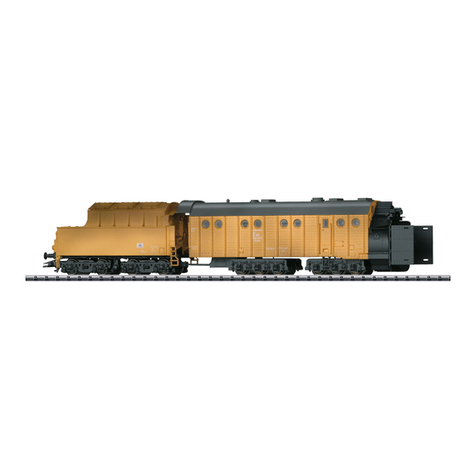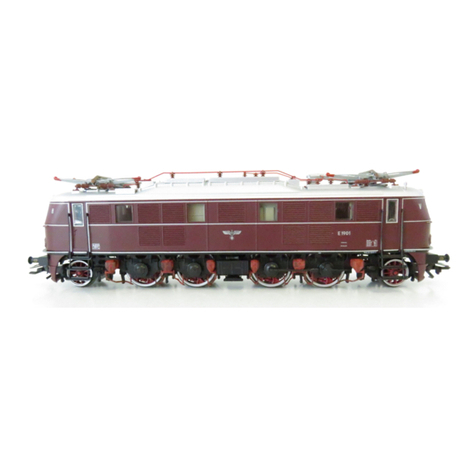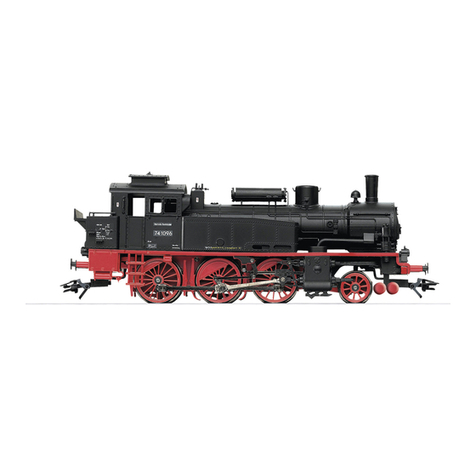2
Informationen zum Vorbild
Bei ihrer Gründung übernahm die Deutsche Reichsbahn
automatisch die verschiedenen Lokomotivtypen der
einzelnen Länderbahnverwaltungen. Die unterschied-
lichen Versionen ließen jedoch auf die Dauer keinen
wirtschaftlich sinnvollen Betrieb zu. Daher wurde ein
Neubauprogramm für Dampflokomotiven initiiert, bei
dem die einzelnen Lokomotivtypen aus möglichst vielen
Gleichteilen aufgebaut waren. Diese Lokomotiven wer-
den allgemein als Einheitslokomotiven bezeichnet.
Zu diesen Einheitslokomotiven gehören auch die Model-
le der Baureihe 89.0, die ab 1934 in einer Gesamtzahl
von 10 Stück für den Rangierbetrieb beschafft wurden.
Die Leistung der Dampfmaschine lag bei 385 kW. Damit
erreichte die Lokomotive eine Höchstgeschwindigkeit
von 45 km/h.
Information about the prototype
When it was founded, the German State Railroad
automatical took opver the different locomotive types
from the individual provincial railroads. Over the long
term, thes different versions did not enable economi-
caly, practical operations, however. For that reason a
programm of new construction for steam locomotives
was initiated in which the individual locomotive types
were built from as many comon parts as possible. The-
se locomotives were commonly referred to as standard
design locomotives.
The models of the class 89.0 also belong to the stan-
dard design locomotive group. A totol of 10 units of this
class werte built starting in 1934 for switching service.
They had a power output of about 385 kilowatts and
they reached a maximum speed of 45 km/h.
Informations concernant le modèle réel
Lors de da création, la Deutsche Reichsbahn a repris
en écritures les divers types de locomotives des anci-
ennes administrations ferroviaires régionales. La diver-
sité des types ne permettant cependant pas d‘assurer
à long terme une exploitation économique, il fut décidé
de lancer un programme de constructions de nouvelles
locomotives à vapeur dites unifiées comprotant des
éléments aussi standards que possible.
Parmi ces locomotives unifiées, on compte la série 89.0
qui a été construite à 10 exemplaires à partir de 1934
et était destinée au service de manceuvre. Sa puis-
sance s‘élevait à 385 kW environ, ce qui lui permettait
d‘atteindre la vitesse de 45 km/h.
Informatie over het voorbeeld
Bij de oprichting van de Deutsche Reichsbahn nam
deze automatisch een verscheidenheid aan locomotief-
types van de verschillende landelijke spoorwegmaats-
chappijen over. Door de verschillende versies was een
economische bedrijfsvoering op langere termihn niet
zinvol. Daarom werd er een nieuwbouwprogramma
opgezet, waarbij de verschillende locomotieftypes uit
zoveel mogelijk dezelfde onderdelen bestonden. Deze
locomotieven worden in het algemeen eenheidsloco-
motieven behoren ook de modellen van de serie 89.0,
waarvan er vanaf 1934 een tiental werden aangeschaft
voor de rangeerdienst. Het vermogen van de machine
bedroeg ongeveer 385 kW. Hiermee bereikte de machi-
ne een maximale snelheid van 45 km/h.
